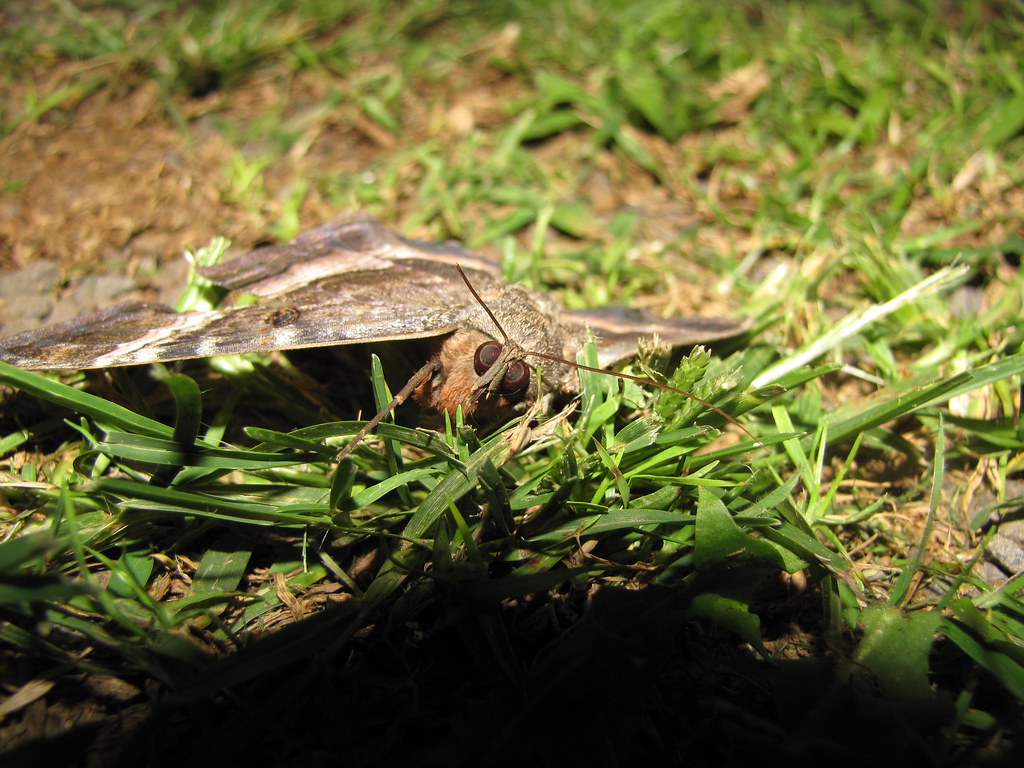Imagine flying through the darkness of night, completely blind, relying only on sound waves bouncing back from objects to navigate and hunt. Now picture another creature that has evolved the perfect counter-attack, a sonic weapon so sophisticated it can fool one of nature’s most skilled predators. This isn’t science fiction – it’s the incredible reality of how certain moths have developed one of evolution’s most cunning survival strategies.
The Acoustic Arms Race in the Night Sky

When darkness falls, an invisible war begins in the sky above us. Bats launch their high-frequency sonar calls into the night, creating detailed sound maps of their environment to locate prey with deadly precision. These nocturnal hunters can detect objects as thin as human hair using their biological radar system. But their primary targets – moths – weren’t about to surrender without a fight. Over millions of years, these seemingly fragile insects have evolved increasingly sophisticated ways to detect, dodge, and deceive their winged predators. The result is one of nature’s most fascinating evolutionary battles, where survival depends on who can outsmart whom in the realm of sound.
Meet the Master of Deception: The Tiger Moth

Tiger moths represent one of evolution’s most impressive acoustic achievements. These remarkable insects have developed specialized organs called tymbals – tiny drumheads located on their thorax that can produce rapid-fire clicking sounds. When a tiger moth detects an approaching bat’s echolocation calls, it doesn’t just flee. Instead, it launches its own sonic counterattack. The moth’s tymbals can produce up to 4,500 clicks per second, creating a sound pattern that interferes with the bat’s sonar system. It’s like jamming a radar signal, but happening in real-time during a high-speed aerial chase through complete darkness.
How Echolocation Actually Works

To understand this incredible deception, we need to dive into how bat echolocation functions. Bats emit ultrasonic calls – sounds too high-pitched for human ears to detect – and listen for the echoes that bounce back from objects in their environment. These returning sound waves create a detailed three-dimensional map in the bat’s brain. The time delay between the original call and the returning echo tells the bat how far away an object is. The intensity of the echo reveals the object’s size, while subtle changes in frequency indicate whether the target is moving toward or away from the hunter. This biological sonar system is so precise that bats can distinguish between different types of insects based solely on their acoustic signatures.
The Moth’s Sonic Warfare Strategy

When tiger moths unleash their clicking barrage, they’re essentially flooding the bat’s sonar system with false information. The moth’s clicks arrive at the bat’s ears at nearly the same time as the genuine echoes from the moth’s body. This creates acoustic confusion – the bat’s brain receives conflicting signals about the moth’s location, size, and movement. Some researchers believe these clicks mimic the acoustic signature of unpalatable or toxic prey, causing bats to avoid what they perceive as a bad meal. Others suggest the sounds create a “phantom echo” effect, making the moth appear to be in a different location than it actually is. The result is often a confused bat missing its target entirely.
The Science Behind the Sound

The acoustic properties of moth clicks are precisely tuned to interfere with bat echolocation. These sounds typically occur in the same frequency range as bat calls – usually between 20 and 100 kilohertz. The timing is equally crucial; moths can detect an incoming bat call and respond within milliseconds. Research has shown that moths can actually adjust their clicking patterns based on the type of bat they’re facing. Different bat species use different echolocation strategies, and some moths have evolved to recognize these variations and respond accordingly. It’s like having a universal translator for predator languages.
Real-World Testing of This Phenomenon

Scientists have conducted fascinating experiments to test this acoustic warfare in controlled environments. In laboratory settings, researchers play recorded bat echolocation calls to moths and observe their responses. The results are remarkable – moths consistently produce their defensive clicks when they detect incoming sonar signals. Field studies using high-speed cameras and ultrasonic microphones have captured this drama in real-time. Videos show bats suddenly veering away from clicking moths, often appearing confused or disoriented. The success rate varies, but moths using their acoustic defenses survive significantly more encounters than those that remain silent.
The Evolutionary Timeline

This acoustic arms race has been going on for millions of years. Fossil evidence suggests that bats evolved echolocation around 50 million years ago, and moths likely developed their defensive clicking abilities shortly afterward. The relationship between these two groups represents one of the longest-running evolutionary competitions on Earth. As bats refined their hunting techniques, moths developed increasingly sophisticated countermeasures. Some species evolved ears specifically tuned to detect bat calls, while others developed erratic flight patterns that make them harder to track. The acoustic jamming ability represents perhaps the most advanced stage of this evolutionary chess match.
Different Moths, Different Strategies

Not all moths use the same approach to acoustic defense. Some species focus on early warning systems – they have incredibly sensitive ears that can detect bat calls from great distances, giving them time to take evasive action. Others rely on startling their predators with sudden bursts of sound that cause bats to momentarily lose focus. Certain tiger moth species have even evolved to produce sounds that are specifically unpleasant to bats, similar to how some animals use bright warning colors to signal toxicity. These “aposematic” sounds serve as an audio warning sign that the moth is not worth pursuing.
The Physics of Acoustic Interference
The interference pattern created by moth clicks operates on principles similar to those used in modern radar jamming technology. When two sound waves of similar frequency overlap, they can either amplify each other or cancel each other out, depending on their phase relationship. Moths exploit this phenomenon to create dead zones in the bat’s acoustic perception. The rapid-fire nature of moth clicks also takes advantage of the bat’s processing limitations. Even the most sophisticated biological computer has limits, and overwhelming it with too much information at once can cause temporary system failures. It’s like a denial-of-service attack on the bat’s sensory network.
Geographic Variations in Acoustic Defenses
Interestingly, the effectiveness of moth acoustic defenses varies significantly by region. In areas with high bat diversity, moths tend to have more sophisticated clicking abilities. This makes sense from an evolutionary perspective – moths facing a wider variety of predators need more versatile defense systems. Tropical regions, where both bat and moth diversity peak, showcase the most advanced examples of this acoustic warfare. Some tropical tiger moths can produce complex click sequences that seem almost musical in their complexity, each pattern specifically designed to confuse different types of predators.
The Role of Learning in This System
Recent research has revealed that both bats and moths can learn and adapt their strategies based on past encounters. Young bats that have been repeatedly fooled by clicking moths sometimes develop techniques for filtering out the false signals. Similarly, moths in areas with particularly persistent bat populations often develop more complex defensive patterns. This learning component adds another layer to the evolutionary arms race. It’s not just about hardwired instincts – both predator and prey can adjust their tactics based on experience, creating a dynamic system that continues to evolve in real-time.
Modern Technology Inspired by Nature

The acoustic warfare between bats and moths has inspired numerous technological innovations. Military radar jamming systems use similar principles to those employed by tiger moths, creating false signals to confuse enemy detection systems. Electronic warfare specialists study these natural systems to develop more effective countermeasures. Sonar technology has also benefited from understanding how bats overcome moth defenses. By studying the ways that some bats can penetrate acoustic jamming, engineers have developed more robust sonar systems that are harder to fool or disrupt.
Conservation Implications

Understanding this acoustic relationship has important implications for conservation efforts. Both bats and moths face threats from habitat loss, climate change, and light pollution. The disruption of these natural acoustic systems could have cascading effects on entire ecosystems. Light pollution, in particular, interferes with the natural behavior of both predator and prey. The artificial illumination can mask the subtle acoustic cues that both species rely on for survival, potentially disrupting millions of years of evolutionary adaptation.
Future Research Directions

Scientists continue to uncover new aspects of this acoustic relationship. Advanced recording technology now allows researchers to capture and analyze the full complexity of these high-frequency interactions. Machine learning algorithms are being used to identify patterns in moth clicks that weren’t previously apparent to human observers. Climate change is creating new research opportunities as well. As temperatures rise and habitats shift, the geographic ranges of both bats and moths are changing. This natural experiment is providing insights into how quickly these acoustic systems can adapt to new circumstances.
Conclusion

The nightly battle between bats and moths represents one of nature’s most sophisticated examples of evolutionary adaptation. These tiger moths have essentially evolved their own electronic warfare capabilities, using sound to jam their predators’ biological radar systems. This microscopic arms race, played out in frequencies beyond human hearing, demonstrates the incredible creativity of evolution in developing survival strategies. The next time you step outside on a summer evening, remember that above your head, an invisible war is being fought with weapons made of sound – and sometimes, the smallest warriors are the most ingenious. What other acoustic secrets might be hiding in the darkness around us?
